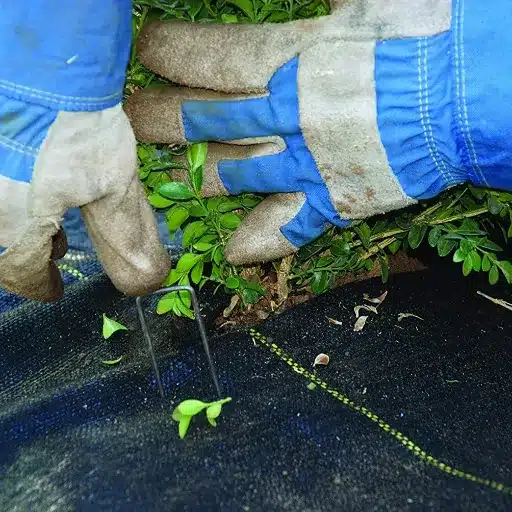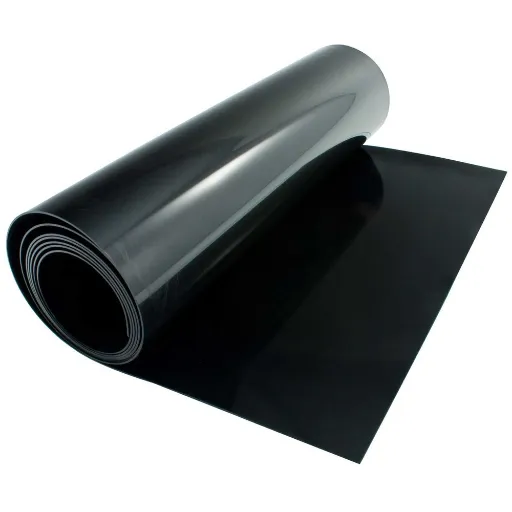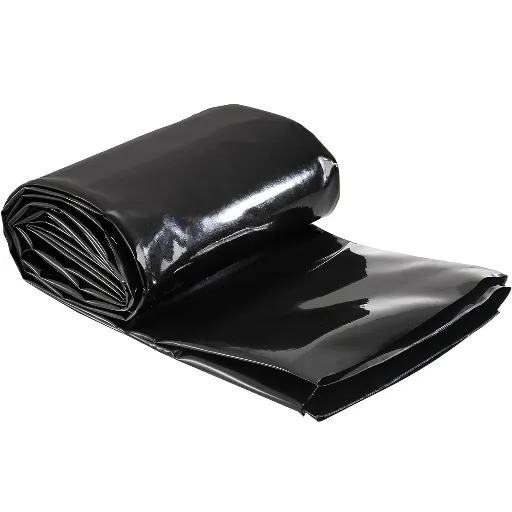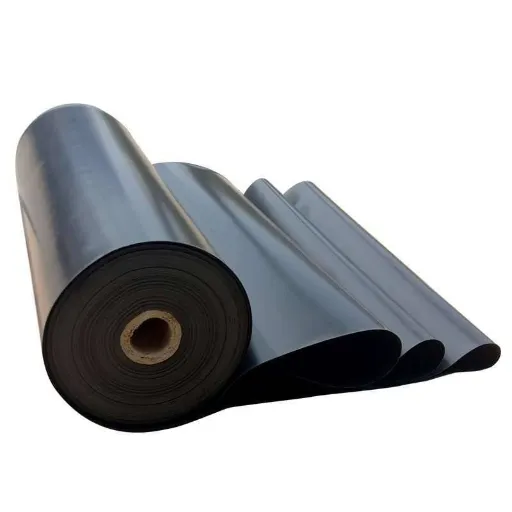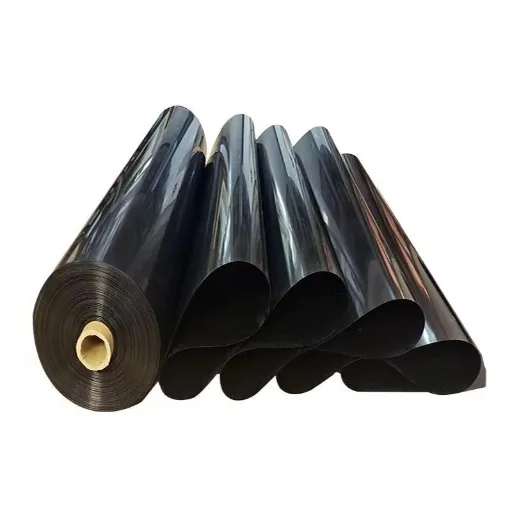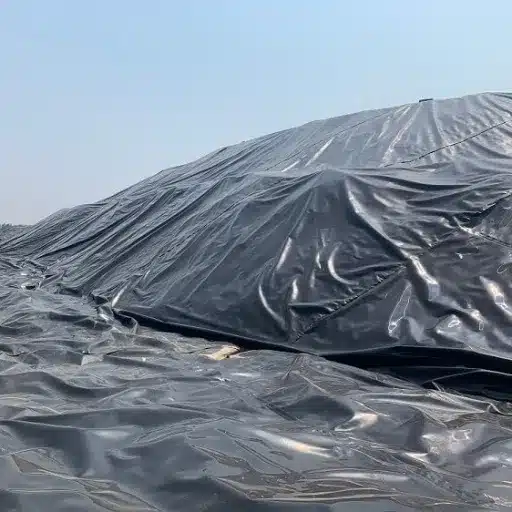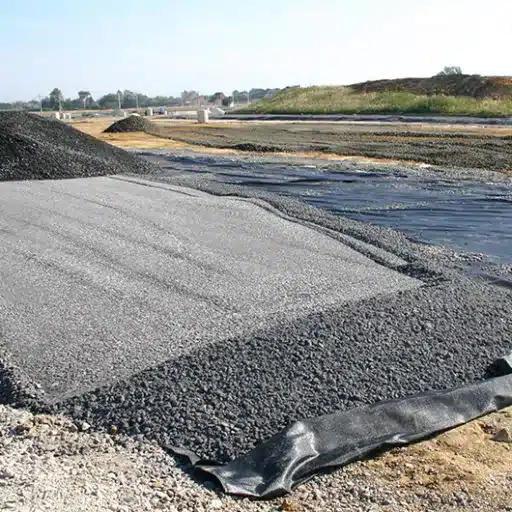An ever-confronting challenge that makes keeping your garden and landscape beautiful and healthy rewarding is the unwanted weed. These invasive plant species detract from the outdoor beauty and vie with your plants for water and nutrients. But here comes the landscape weed barrier fabric to the rescue. This blog will be your best weed barrier fabric guide, discussing its benefits, what to look out for in the best weed fabric, and how to best apply it. Whether you’re an experienced gardener or just beginning, this will give you a hand in creating a garden that’s easy on maintenance and free from weeds year-round.
Why Weed Control is an Important Landscape Consideration
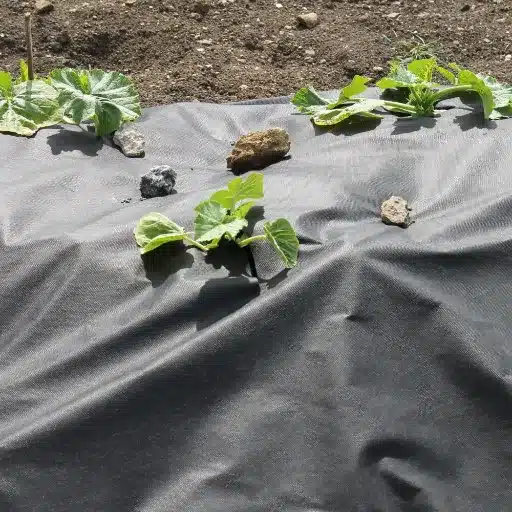
Weed control is an essential thing to consider when aiming for a healthy, beautiful, and efficient landscape. For instance, weeds can be a nasty sight to behold, but they also compete with the desired plants for vital resources such as nutrients, water, sunlight, and space. If left to grow, weeds will almost certainly overrun a garden, reduce the growth and crop yield of the desirable plant, and deteriorate your overall landscaping.
📊 Key Statistics
- Yield Reduction: Weeds can reduce yield from flower beds and vegetable gardens by 34% to 76%
- Maintenance Reduction: Weed barrier fabric lowers weed pulling demand by more than 90%
- Effectiveness: Properly installed landscape fabric can reduce weed growth by up to 95%
Agricultural industry studies carried out recently have shown that could reduce yield from flower beds and vegetable gardens by anywhere between 34% and 76%, depending on varieties of plants and species of weeds growing alongside them. While weeds such as crabgrass or bindweed may be nice to look at, once they are established, they can quickly compete with your plants and become difficult to get rid of. Besides decreasing plant growth, weeds also harbor pests and diseases to the detriment of your landscape.
Not only do proper weed control measures ensure that your garden remains visually appealing, but they will also save you some time and effort in the long run. One study revealed that weed barrier landscape fabric lowers the demand for weed pulling by more than 90 percent, allowing gardeners to concentrate on cherishing their plants instead. Weed control in conjunction with adequate mulching and appropriate maintenance fosters soil improvement, water conservation, and ideal plant growth.
What is Weed Barrier Landscape Fabric?
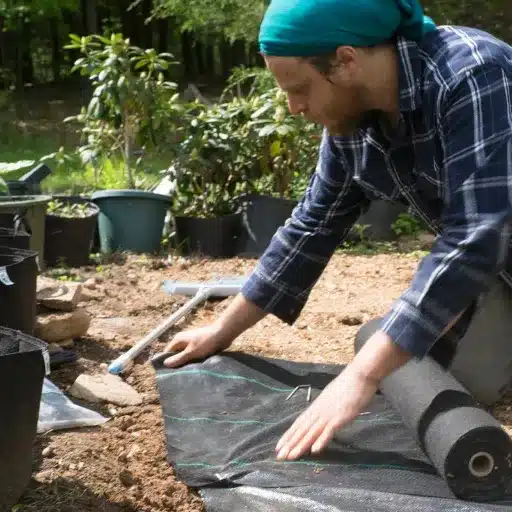
Weed barrier landscape fabric is a special form of landscape fabric that is used in gardens, flower beds, and other landscaped areas to prevent any kind of weed from growing. Usually made from polypropylene or polyester, this material is permeable to water, air, and nutrients up to the soil while blocking sunlight from reaching weed seeds, which in turn prevents their germination and growth.
Modern weed fabrics are produced in different thicknesses and strengths, typically measured in mils. For example, a 5 to 7 mil fabric is thicker and would be suitable for heavy-duty applications such as pathways and rock gardens, whereas the thinner varieties work well for less rigorous garden spaces. Landscape fabric properly installed can reduce weed growth by up to 95 percent, thus making it very effective and very low-maintenance to keep weeds at bay.
💡 Additional Benefits
- Retains soil moisture by preventing surface evaporation
- Highly beneficial in drought conditions
- Can be enhanced with mulch or gravel for improved aesthetics
- Many products feature UV resistance for extended lifespan
One of the big advantages that weed barrier fabric has to offer is that it retains moisture in the soil by preventing evaporation at the surface, a feature that is highly desirable in drought situations. Besides top coating it with mulch or gravel, gardeners enhance the effect of the fabric and at the same time improve landscape aesthetics. Some of the newer products also feature UV resistance to upscale their life expectancy, even when subjected to prolonged exposure under direct sunlight.
Criteria for Selecting the Best Weed Barrier Fabric
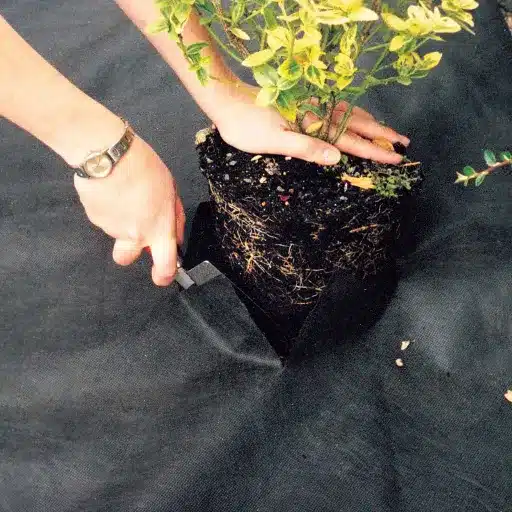
When choosing the best weed barrier fabric, I consider the product’s durability, UV resistance, and permeability to suit the special needs of my garden. It must be such that it prevents weed growth but allows water and air to permeate in the soil. Other considerations for me are the fabric’s thickness, ease of installation, and viability with the top layers I wish to place upon it, such as mulch or gravel, in view of functionality and appearance.
Material Types and Durability
🔷 Woven Fabric
Usually polypropylene or polyester, woven fabric is of high durability and allows air and water to go through it while blocking sunlight. This type is more suitable for high-traffic areas and long-term landscaping installations.
Lifespan: 5-15 years
🔶 Non-Woven Fabric
Non-woven fabric is manufactured with bonded fibers and is better at completely suppressing weeds because it entirely blocks the passage of light. It, however, does not permit the passage of water, and for this reason, it is used in places where water control is not necessary. It is a favorite product to use for permanent installations under rocks or gravel.
Lifespan: 10-20 years with good maintenance
🔸 Plastic Sheeting
This is the ultimate product in weed control made of polyethylene that blocks air, water, and sunlight. Since it leaves through nothing, it may impair good soil health in time. It is recommended for use in temporary construction jobs and areas in which you do not wish to have anything growing.
Lifespan: 1-5 years (weather dependent)
Environmental Considerations
A landscaping fabric’s environmental impact must be taken into account when choosing and applying it. Many traditional weed barrier fabrics are made from synthetic materials such as polypropylene or polyester that can last for long but might contribute to plastic pollution if not disposed of properly. According to recent studies, these materials take hundreds of years to break down, during which time they may be releasing microplastics into the soil and surrounding ecosystems.
🌱 Eco-Friendly Alternatives
- Biodegradable fabrics: Made from jute, hemp, or coir
- Environmental benefit: Eventually decompose and enrich soil with organic matter
- Impact reduction: Changing to biodegradable fabrics could reduce plastic waste by 40% over five years
To lessen this impact, alternatives that are taken into account include biodegradable or organic fabrics that are made from jute, hemp, or coir. All of these natural fabrics eventually decompose and enrich the soil with organic matter, while a good weed suppression remains. The 2022 report emphasized the fact that just changing to biodegradable landscaping fabrics could reduce plastic waste in gardens by 40% over five years.
For greater sustainability, it is also advised to incorporate the fabric installation with mulching techniques, placing organic mulch such as wood chips or straw on top of the weed barrier. This increases their longevity while benefiting soil health through moisture conservation and nutrient enrichment. Conscious choices about fabric type, disposal practices, and encouragement methods such as mulching ensure that the environmental footprint associated with landscaping fabric may be greatly reduced while maintaining its benefits for weed control.
Practical Tips for Installation and Maintenance
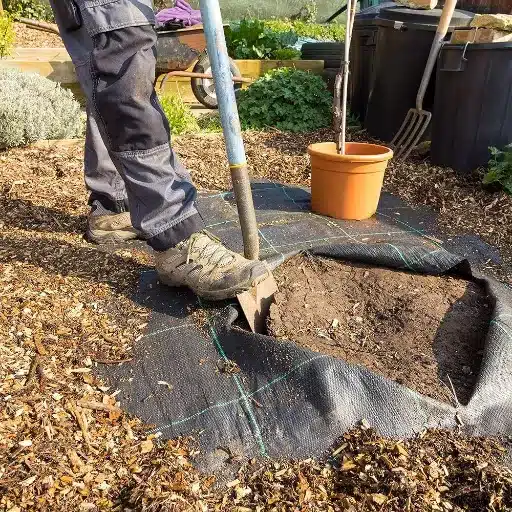
When choosing the best weed barrier fabric, I usually ask, “Is this really durable? Is it permeable enough for my landscaping needs?” I look for materials with adequate water and air flow but prevent weed growth. I also ensure that it is environmentally friendly and can be installed and maintained with little effort for use over a long period.
How to Properly Install Weed Barrier Landscape Fabric
Properly installing weed barrier landscape fabric assures weed control and a fine flourishing garden. Below is a step-wise approach for the best results, along with good tips based on expert opinion and data.
Preparing the Area
Clear the garden site of any debris, unwanted plants, and a great diameter of stones. Using a rake, level the soil for smooth working. Soil preparation is important to lessen the chance of weed infestation through the fabric.
Measure and Cut the Fabric
Measure to find the amount of landscape fabric needed. Using scissors or a utility knife, cut the fabric with a slight overlap for seams—about 6 to 12 inches is ideal. An overlap makes sure there is no gap through which weeds will protrude and assures full coverage.
Lay the Fabric
Lay the soft fabric carefully over the prepared soil without wrinkles. Place the fabric rough side down to help it with grip on the soil, which is in accordance with many manufacturers’ recommendations. Secure the edges and the overlap areas with U-shaped garden staples which are placed every 8-12 inches.
Cut Slits for Plants
If planting shrubs or flowers, cut X-shaped slits in the fabric at the sites designated for planting and fold back the material. Dig holes for the plants, place them in, and cover the edges of the fabric around the base with soil to prevent any movement.
Maintaining Your Weed Control Fabric
Maintaining your weed control fabric will guarantee its continued success in suppression of unwanted plants and promotion of the garden’s health. Here are some tips you should follow to maintain your fabric while getting the most from it:
🧹 Clear Debris Regularly
Regularly check for any items such as fallen leaves, bits of soil, and other debris that might have settled atop the fabric. Allowing such a layer to remain means it can actually become an alternate medium where weed grow while suppressing their growth on the fabric itself.
🌿 Mulch Replenishment
A layer of mulch atop fabric isn’t just for decoration; it also weighs down fabric and prevents fabric exposure to UV rays while improving the moisture retention of the soil. Do ensure that the mulch does not decompose excessively so as to avoid the composting mulch budding into another form of growth medium for weeds.
🔒 Avoid Fabric Movement
Ensure the fabric remains securely fastened with landscaper’s staples or pins, at least just after really heavy rains, strong winds, or other disturbances that are capable of washing it away. Re-fastening the anchors regularly is a must to prevent any further washing away of the fabric.
Conclusion: Making the Right Decision on Weed Barrier Fabrics
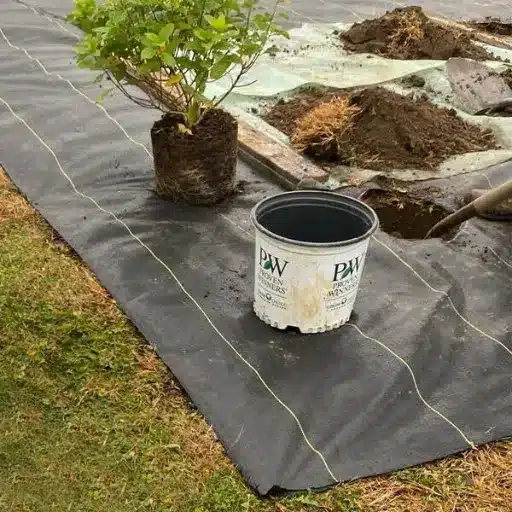
Since weed barrier fabric does require constant maintenance and monitoring, I have come to expect this more so with proper installation, proper securing, and maintenance of mulch cover to maximize the fabric’s effectiveness. Constant inspections and adjustments will prevent problems such as fabric movement or overly quick decomposition of mulch and keep the fabric functional in the long run.
Recapping the Benefits of Landscape Fabrics
Premium landscape fabrics have numerous benefits for weed control and the care of plants. Such fabrics provide an impermeable barrier against weeds invading one’s garden, reducing any need to use chemical herbicides. As from modern research, weed germination could be reduced by up to 95% if landscape fabrics are properly installed, hence, protecting the garden from weeds and allowing the good vegetation to thrive.
🏆 Key Advantages Summary
- Durability: High-end fabrics can last 10-15 years with proper care
- Water Conservation: Gardens can save 20-40% more water compared to unprotected areas
- Effectiveness: Up to 95% reduction in weed germination when properly installed
- UV Protection: Premium fabrics are UV-stabilized for harsh weather conditions
- Environmental Impact: Reduces need for chemical herbicides
Another advantage is that these modern landscape fabrics are tough and durable. A lot of the high-end fabrics are UV-stabilized; they are made of polypropylene or polyester materials, so they are fully capable of withstanding tough weather conditions, tearing, and remaining effective for a couple of years. Depending on care, the fabrics may even last up to 10-15 years, representing a very good investment for the homeowner who is serious about sustainable gardening.
Nutrient management will also benefit from the soil conservation aided by landscape fabric-induced greatest evaporation rates. Plant areas will benefit from this, especially in dry zones where water is scantily provided. Expert views report that gardens with weed barrier fabric can save between 20 and 40% more water compared to those without protection, thus aiding gardeners in lowering their ecological footprints.
Reference Sources
-
Target’s Landscaping Fabrics Section
This source provides a variety of weed barrier fabrics, showcasing their features, sizes, and materials. It is a trusted retailer offering insights into consumer preferences and product availability.
Source Link -
Reddit Landscaping Community
A community-driven platform where professionals and enthusiasts discuss the best weed barrier landscape fabrics. It includes real-world experiences and recommendations, making it a valuable resource for practical insights.
Source Link -
Target’s Weed Barrier Product Listings
This page lists high-quality weed barrier fabrics from trusted brands, providing details on their effectiveness and suitability for various landscaping needs.
Source Link
Frequently Asked Questions (FAQs)
❓ How does a weed barrier landscape fabric work?
The weed barrier landscape fabric blocks sunlight from reaching the soil surface, which prevents the germination of weeds seeds. While this fabric allows water and nutrients to enter, it does not allow weeds to grow. This is necessary for the good health of the garden bed or landscape area.
❓ Can I lay mulch over landscape fabric?
Yes! Applying mulch over a layer of landscape fabric is highly recommended. Mulch adds extra suppression of weeds and also retains soil moisture. Hence, when combined with a weed barrier fabric, it further strengthens the weed control properties, as well as enhances the looks of your garden landscape.
❓ What kinds of landscape fabrics are there?
Types of landscape fabrics available include woven, non-woven, and geotextile fabrics. Woven landscape fabric is sturdy and excellent for drainage, while non-woven fabrics work best for weed control. A right kind of fabric depends on your gardening requirements.
❓ How do you use weed barriers in vegetable gardens?
To use weed barriers in vegetable gardens, prepare the garden bed by removing any weeds. Lay down the landscape fabric and secure it with landscape pins. Cut holes only where your plants will be placed so that it will effectively prevent any weed from growing while allowing plants to grow.
❓ Can I use heavy-duty weed barrier landscape fabric for gravel driveways?
Yes. Heavy-duty weed barrier landscape fabric would be perfect for gravel driveways because it prevents weeds from growing through the gravel, keeping the surface clean and macadamized. Just be sure to cover it with a sufficient layer of gravel to weight it down.
❓ How long does a landscape fabric last?
Depending on the kind and quality, a landscape fabric can last for a shorter or longer period of time. Heavy-duty landscape fabrics impede a number of years, while cheaper ones usually need replacement much sooner. The premium quality heavy-duty weed barrier is able to withstand harsh conditions and thus have a longer lifespan.
🌱 Ready to Transform Your Garden?
Choose the right weed barrier fabric for your landscaping needs and enjoy a beautiful, low-maintenance garden year-round!

